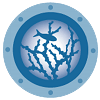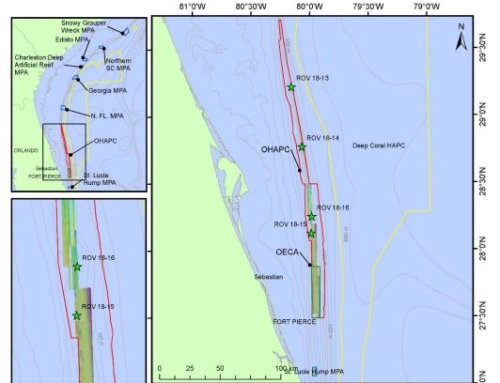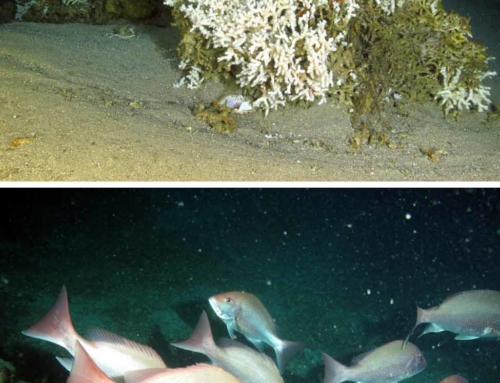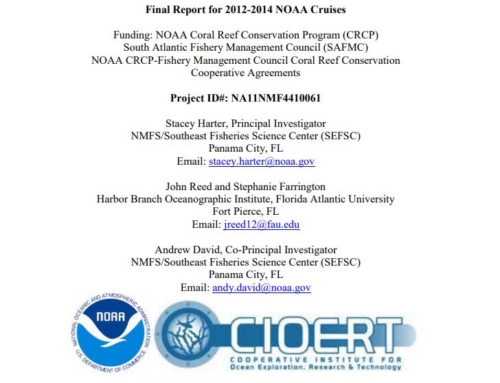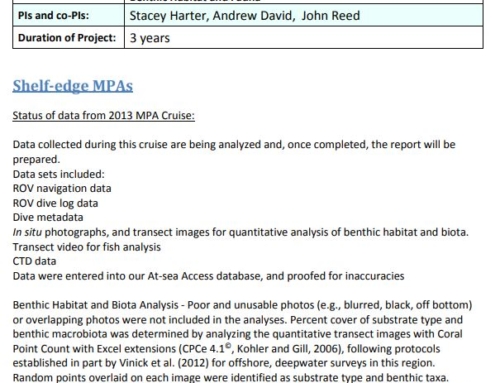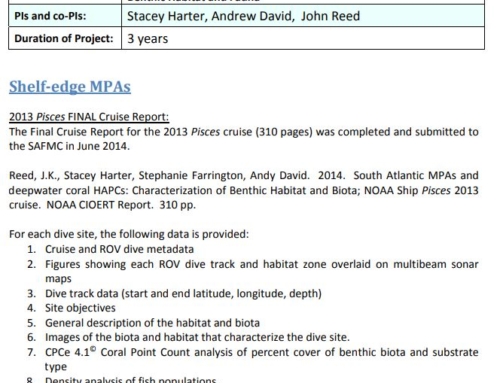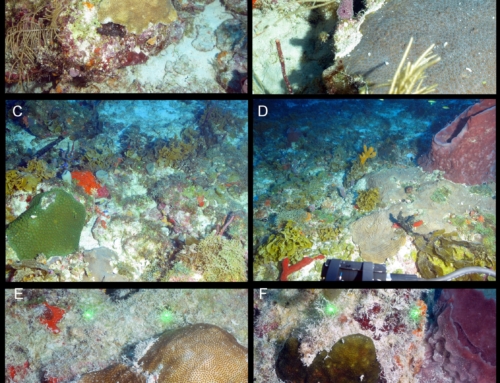Project Description
Characterization and interrelationships of deepwater coral/sponge habitats and fish communities off Florida, USA
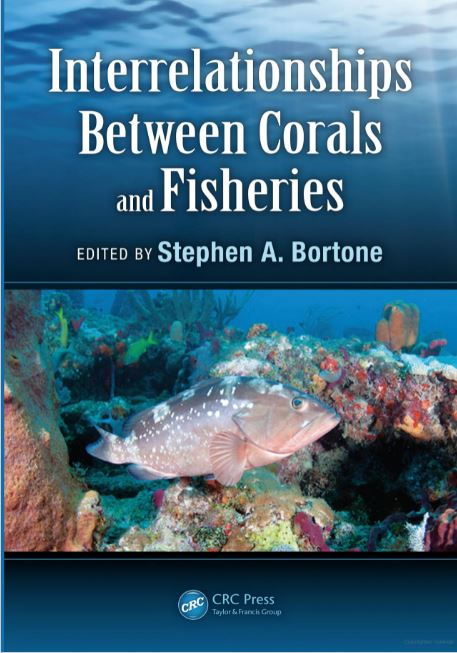
John K. Reed, Stacey Harter, Stephanie Farrington, Andy David
Introduction
In 2009 and 2010, the South Atlantic Fishery Management Council (SAFMC) and the U.S. National Oceanographic and Atmospheric Administration (NOAA) through the Magnuson Stevens Fishery Management Act established eight deepwater, shelf-edge marine protected areas (MPAs) and five deepwater coral habitat areas of particular concern (CHAPCs) along the outer continental shelf and upper slope off the southeastern United States (NOAA 2010). This network of protected areas was established to sustain and restore reef fish populations and to protect deep-sea coral and sponge ecosystems (DSCEs) from destructive fishing practices, such as bottom trawling and the use of longlines of crab pots, which may extend several kilometers with dozens of traps on each one. This study focused on the deepwater protected managed areas on Pourtalès Terrace, south of the Florida Keys, which includes the East Hump MPA and the Pourtalès Terrace CHAPC, and documented the benthic habitats, fish communities, and benthic macrofaunal communities associated with deepwater, high-relief geological features.
In September 2011, a 3-week research cruise was conducted by the Cooperative Institute for Ocean Exploration, Research, and Technology (CIOERT) at Harbor Branch Oceanographic Institute, Florida Atlantic University (HBOI-FAU) in collaboration with NOAA. The NOAA ship R/V Nancy Foster and the University of Connecticut’s (UCONN) Kraken 2 remotely operated vehicle (ROV) were used to survey 14 sites inside and outside the MPA and CHAPC on Pourtalès Terrace (Reed et al. 2013a). This is the first detailed quantitative characterization of the deepwater reef habitats and fish communities within these managed areas in the south[1]ern Straits of Florida, and the first extensive multibeam sonar mapping of the terrace.
The primary goal of this research was to document and characterize the deepwater benthic habitats and associated fish communities within these newly established managed areas. These data were analyzed specifically to better understand the interrelationships of the fish communities, including commercially and recreationally important species, relative to the DSCE habitats. These data may then be used as a relative baseline to document changes in these areas due to the implementation of fishing restrictions and to monitor the efficacy and health of these newly designated managed areas. These data will be of value to the SAFMC, NOAA Fisheries Service, and NOAA Office of National Sanctuaries for management decisions on these habitats and managed key species.
Download Full Chapter: Chapter 5. Characterization and interrelationships of deepwater coral sponge habitats and fish communities off Florida
Reed JK, Harter S, Farrington S, David A. 2014. Characterization and interrelationships of deepwater coral/sponge habitats and fish communities off Florida, USA. In: Bortone S, editor. Interrelationships between corals and fisheries. New York, USA: CRC Press. p. 49-80.
| Title | Interrelationships Between Corals and Fisheries CRC Marine Biology Series |
| Editor | Ph.D., Stephen A. Bortone |
| Edition | illustrated |
| Publisher | CRC Press, 2014 |
| ISBN | 1466588314, 9781466588318 |
| Length | 321 pages |
| Export Citation | BiBTeX EndNote RefMan |

